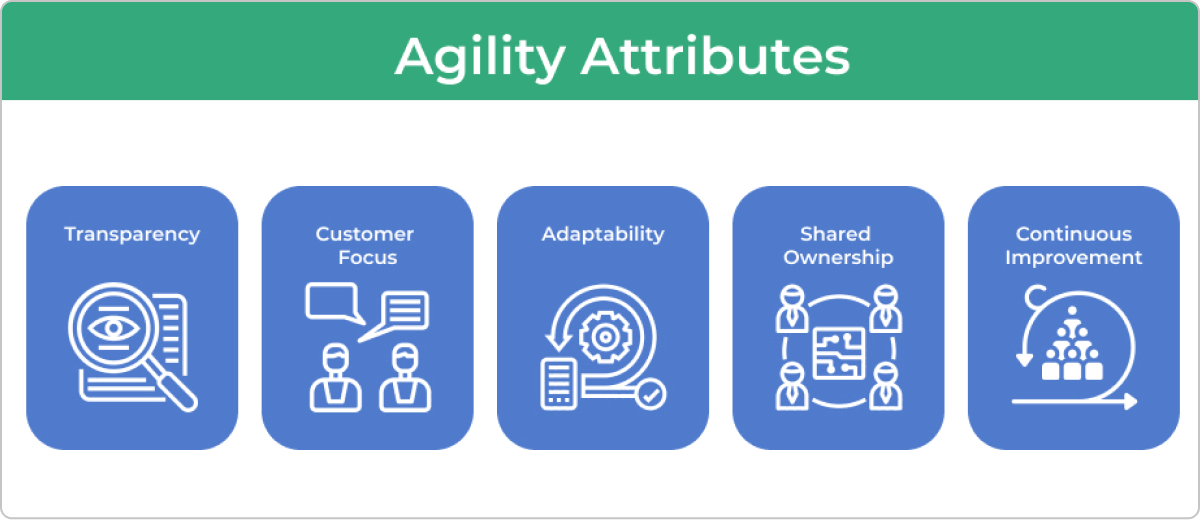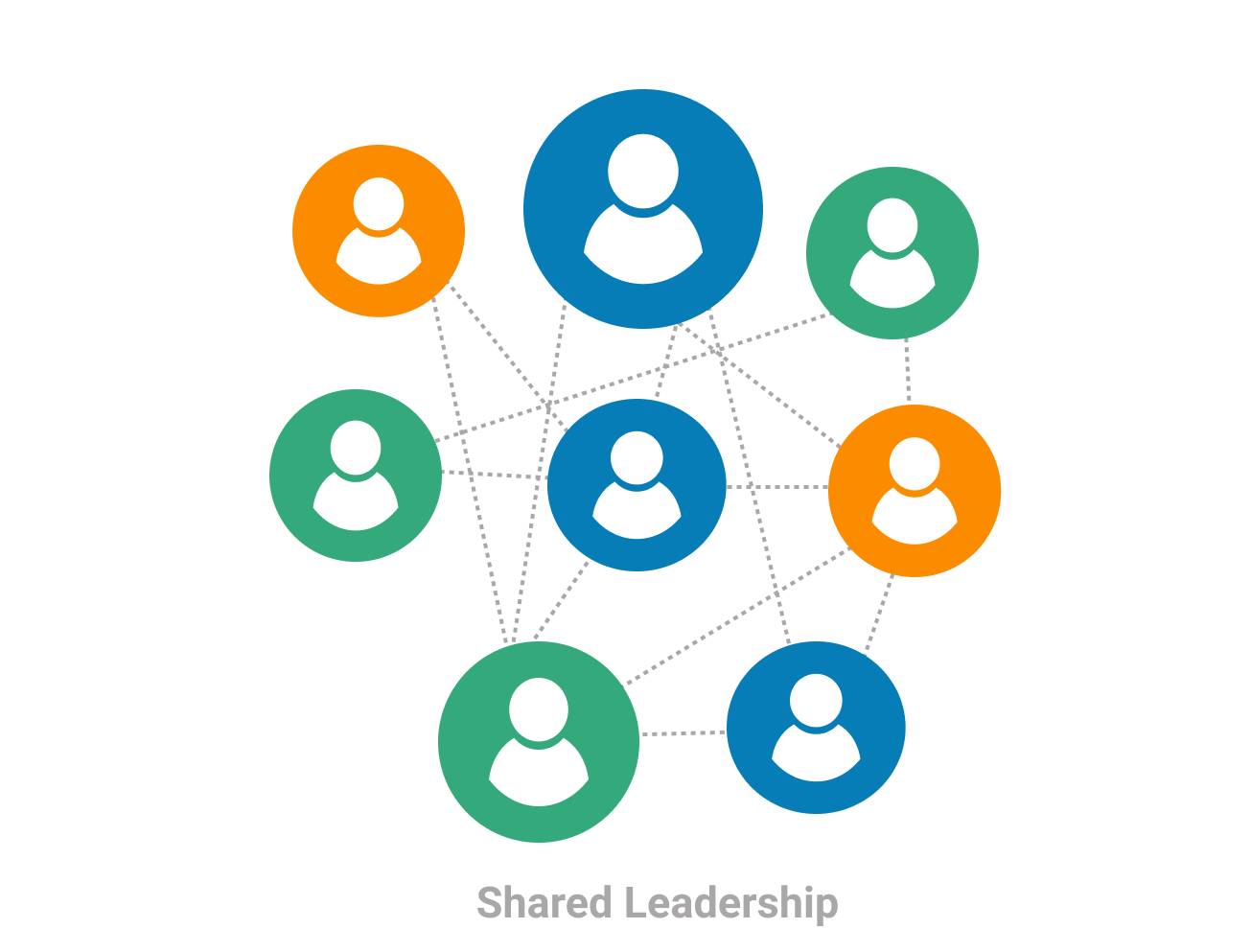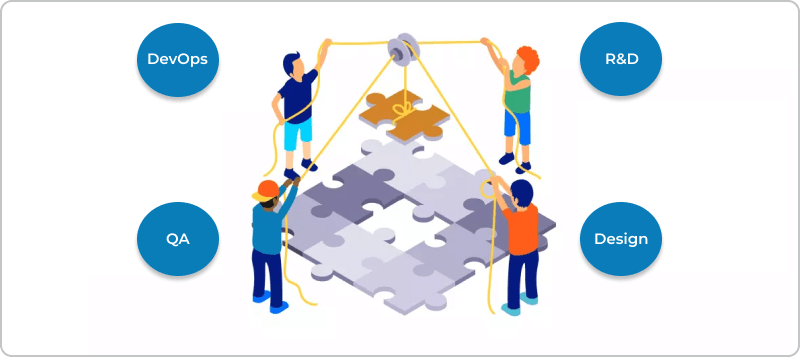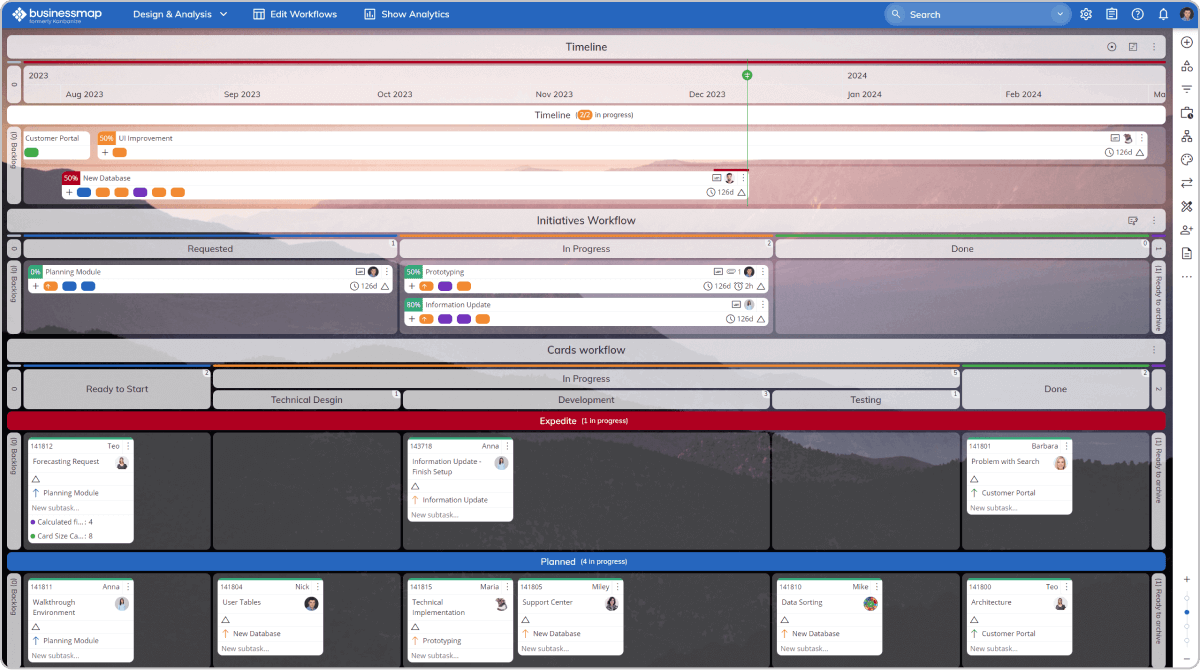Nowadays, organizations face a roller-coaster of challenges, including increasing customer demands, advancing technologies, and dramatically changing conditions. To stay competitive, responsive, and resilient, agility has become a critical necessity. As a result, many organizations are shifting their operating models towards more Agile ways of working.
Surveys indicate that companies embracing an agile mindset and undergoing agile transformations often achieve remarkable results across various domains, highlighting the importance of agility for long-term success.
The concept of business agility transformation has emerged as a strategic imperative. It allows companies to shift from traditional organizational structures towards a dynamic and flexible approach that fosters innovation, collaboration, and continuous improvement.
Business agility is not another fancy word but a much-needed concept to guide businesses forward. Let’s dive into the common steps involved in a business agility transformation journey.
The Essence of Business Agility
Business agility is a mindset, the state of being Agile, that enables organizations to thrive in the face of uncertainty. At its core, business agility involves the ability to sense changes in the business environment, respond rapidly, and seize emerging opportunities while minimizing risks.
 Key agility characteristics
Key agility characteristics
Agility allows individuals, teams, and organizations to nurture a drive for innovation, constantly experiment, and meticulously address the evolving customer needs and market changes. Consequently, businesses can maintain competitiveness and relevance by optimizing processes, prioritizing frequent delivery, embracing adaptability, and concentrating on the value they deliver.
Agile vs. Business Agility: Do They Really Differ?
A common misunderstanding is that there is no difference between agile and agility. Indeed, there is (see the article Agile vs. Agility: How to Be Truly Adaptable to Changes?).
Agile is a mindset described by 4 values, defined by 12 principles, and manifested by various practices that guide teams to organize and manage their work in a more flexible way. On the other hand, agility is not about doing the work simply following agile methodologies and best practices but embracing a behavioral shift toward the Agile mindset. In other words, not just "doing Agile" but truly “being Agile”.
What Is Business Agility Transformation?
Business agility transformation is an organization's journey toward becoming more responsive, adaptable, and resilient in a constantly changing environment. It's a strategic shift that redefines how organizations operate, breaking away from rigid structures to embrace flexibility, innovation, and continuous improvement.
This transformative journey touches every aspect of an organization, from its processes and technologies to people and leadership practices. It is not about the company's size or industry that determines if a company is eligible to undertake this operational transition but rather its willingness to adapt and reimagine its functions.
Since this transition does not happen overnight, the process should not be time-boxed but considered an ongoing initiative.
Why Business Agility Transformation and Agile Transformation Are Not the Same Thing?
Even though these two transformation processes might seem the same, they are not, and here is how you can tell them apart.
Agile transformation represents shifting the organizations’ management methods from traditional to more adaptive ways of doing work. It focuses on improving the work processes using an Agile methodology. It also emphasizes the ability of organizations to adapt and respond promptly to the rising and changing needs and requirements coming from the market and clients.
On its part, a business agility transformation is a holistic approach to transforming entire organizations. It focuses on aligning people, processes, and functions around the Agile work management model. It typically involves implementing changes to the organization’s culture, leadership model, structural framework, and technology infrastructure. Additionally, it consists of the cultivation of new skills and capabilities.
To clarify this ambiguity, consider Agile transformation as the process of changing the way work is done, whereas business agility transformation involves changing people's perspectives toward their work.
6 Steps for a Successful Business Agility Transformation
Although organizations approach transformations differently, there are some universal considerations to guide organizations to succeed in their business agility transformations.
Step 1. Understand and Communicate Why You Need This Transformation
Business agility transformation will only be successful when there is a clear understanding of the real reason behind stepping into this transition. This involves recognizing the changing market conditions, internal organizational challenges, or industry disruptions that necessitate a more agile approach.
Once identified, it's crucial to communicate this need effectively across the organization. This communication should articulate the reasons for the change, the benefits, and how this shift aligns with the organization's overall goals and strategy. It sets the stage for gaining buy-in and commitment from all levels of the organization, which is essential for a successful transformation.
Going Agile is not about implementing a set of Agile practices and certainly should not be pushed into the teams’ everyday operations. To ensure a smooth transition to this new way of working, the concept of business agility needs to be understood from all vantage points and adopted one step at a time. When everyone realizes the true why of this transformation, they will naturally get excited about this change and the journey of getting there.
Step 2. Focus on the Organizational Culture
The second step in a business agility transformation involves focusing on the organizational culture and reassessing the existing values. This critical phase requires an in-depth evaluation of the organization's current cultural norms and practices, identifying areas that may hinder agility. The goal is to align the organizational culture with agile principles, emphasizing cross-functional collaboration, knowledge sharing, adaptability, customer-centricity, and continuous improvement.
Step 3. Decentralized Control
Unlike traditional companies, where the top-down leadership model is predominant, organizations looking to enhance their business agility need a more decentralized leadership. Derived from Lean management, the shared leadership model supports the idea of guiding teams toward achieving a common goal.
This organizational model has many advantages, including creating self-organizing teams. Agile teams are empowered to make informed decisions, experiment, and take responsibility for what they think is best suited for completing their work. As a result, teams become more engaged, motivated, and productive.

Step 4. Open and Cross-Departmental Collaboration
Break down silos and encourage collaboration across departments. Foster an environment where teams from different disciplines work seamlessly together, sharing insights and ideas to drive innovation.
 Cross-functional team in Agile
Cross-functional team in Agile
By working collaboratively, Agile cross-functional teams are highly prone to improve their workflow and communication, reducing the delivery time but still not compromising product quality and contributing to the overall value generated.
Step 5. Visualize Work and Build Value Streams
The fifth step in a business agility transformation is visualizing work and creating value streams. This step is pivotal as it involves creating a clear and transparent view of all ongoing work within the organization. This way, everyone is informed and aware of their tasks, deadlines, bottlenecks, and overall progress.
Visualization tools like portfolio boards are commonly employed for this purpose. These tools enable teams and management to see the flow of work, from inception to delivery, in real-time.

Work visualization on a portfolio board in Businessmap
Identifying value streams will help understand inefficiencies, redundancies, and opportunities for improvement in the value delivery process. Building value stream maps provides a clear view for organizations on how to streamline their operations and ensure that efforts are aligned with the organization's strategic objectives.
"Best Tool for Lean and Business Agility. Its [Businessmap's] native adherence to the main needs presented by our organization, combined with the strong integration of the strategy into the functioning of the teams, was essential for choosing Businessmap (formerly Kanbanize) as a management tool for our organizational transformation. It enabled the use of our lean-agile operating model."
Capterra user review
Step 6. Embracing a Culture of Continuous Improvement
Undertaking a business agility transformation entails a dedication to meeting the expectations of the consumers and adapting to continuous changes in the marketplace.
Fostering a culture of continuous improvement means embracing change, learning, and continually seeking ways to enhance performance and deliver greater value.
Common Challenges in Business Agility Transformations
While the benefits of business agility transformation are evident, the journey is challenging. Identifying and responding to these challenges is essential for a successful transformation.
Let’s look into the most common challenges organizations face.
-
Cultural resistance: Employees and leadership accustomed to traditional structures may resist adopting new ways of working. Overcoming this resistance requires effective communication, education, and fostering a culture that values adaptability.
-
Lack of leadership alignment: Business agility transformation requires strong leadership commitment and alignment. If leaders at different levels of the organization are not on the same page, conflicting priorities and inconsistent messaging can hinder progress.
-
Inadequate training and skill gaps: Employees may lack the necessary skills and understanding of Agile methodologies. Insufficient training programs or a failure to address skill gaps can impede the transformation process.
-
Organizational silos: Traditional organizational structures often lead to silos, hindering collaboration and communication across departments. Breaking down these silos is essential for fostering cross-functional teams and a more collaborative environment.
-
Resource constraints: The transformation may require significant training, technology, and infrastructure investments. Managing these resources efficiently is essential to avoid bottlenecks.
-
Insufficient Communication: Clear and consistent communication is vital during a business agility transformation. Fostering a culture of sharing feedback is critical for the growth of an organization. Without regularly exchanging feedback, organizations risk missing out on learning from their mistakes and can easily lose the overall direction of the change.
Get Started with Business Agility Transformation
It is far from the truth that embarking on a business agility transformation is an easy-going initiative. It is a complex process that requires full dedication from all organizational levels to yield the benefits agile offers.
As mentioned above, the first and foremost step in this continuous transformation is realizing the need for that change. The second important thing is to seek professional training and support to ensure you are on the right path toward achieving organizational agility.
The PPM Ops program is trusted by organizations worldwide. It is designed to help individual teams and organizations work in an agile manner. Developed by Theodora Bozheva, this enhanced course helps teams to visualize and manage their unique processes and handle changing priorities to meet their customer expectations. With a success rate of 92% in achieving business goals and increasing team productivity by 250%, this program is a preferred choice for many leaders.
Businessmap is the most flexible software
to align work with company goals
In Summary
In a business environment marked by rapid change and uncertainty, business agility transformation is no longer a choice but a necessity. Organizations that embrace agility as a core principle position themselves to navigate the complexities of the modern business landscape successfully.
By fostering a culture of continuous improvement, collaboration, and innovation, businesses can unleash their full potential and gain a sustainable competitive advantage.





 Key agility characteristics
Key agility characteristics
 Cross-functional team in Agile
Cross-functional team in Agile


